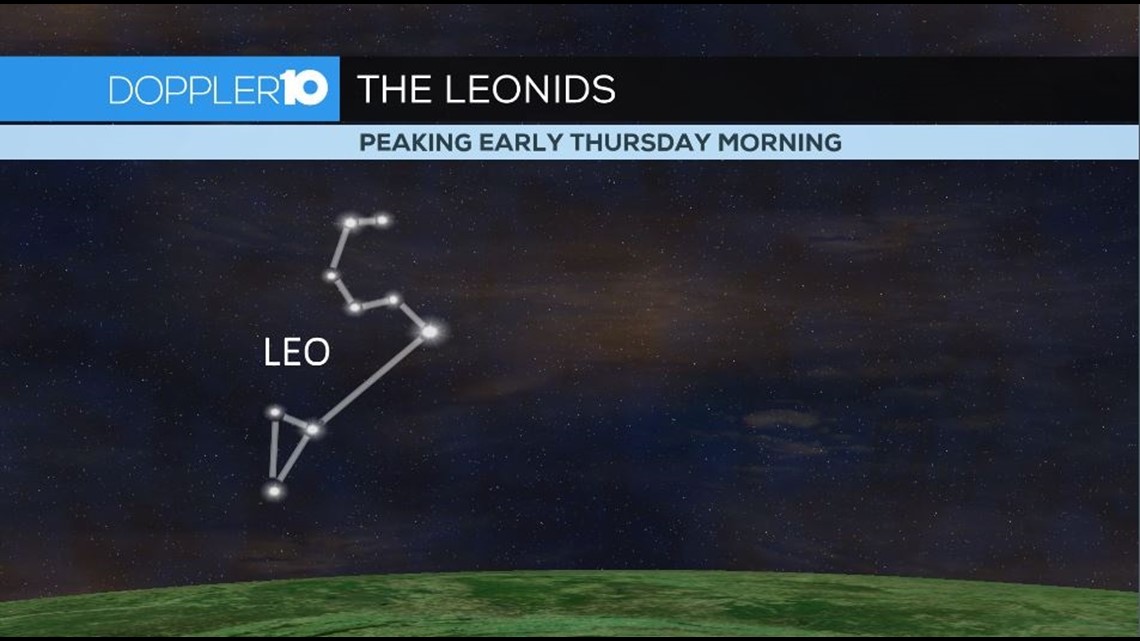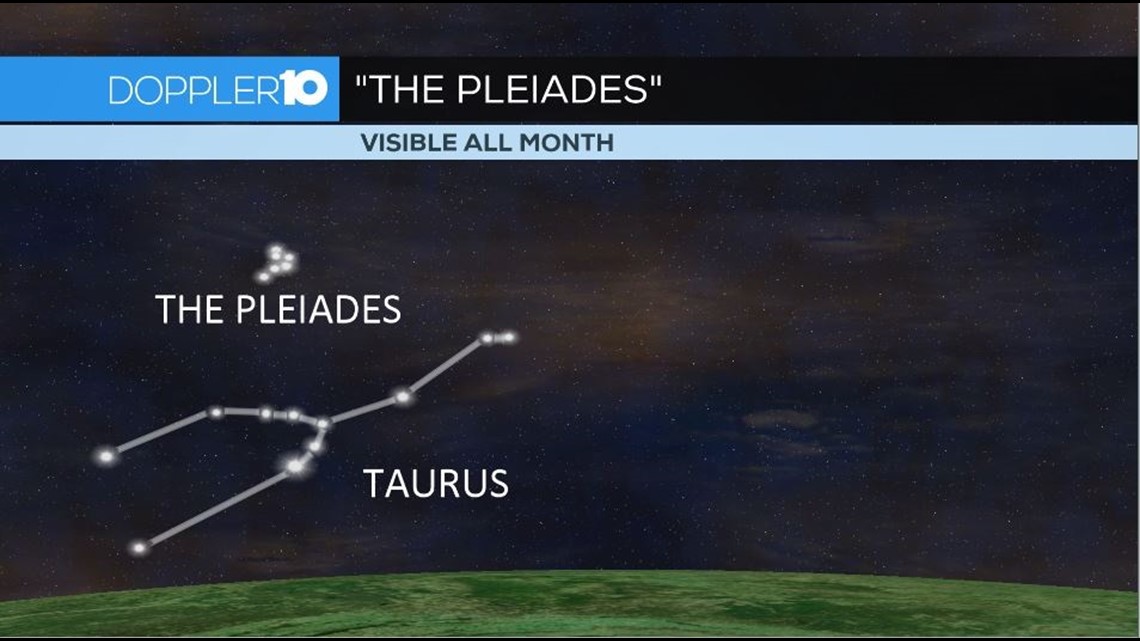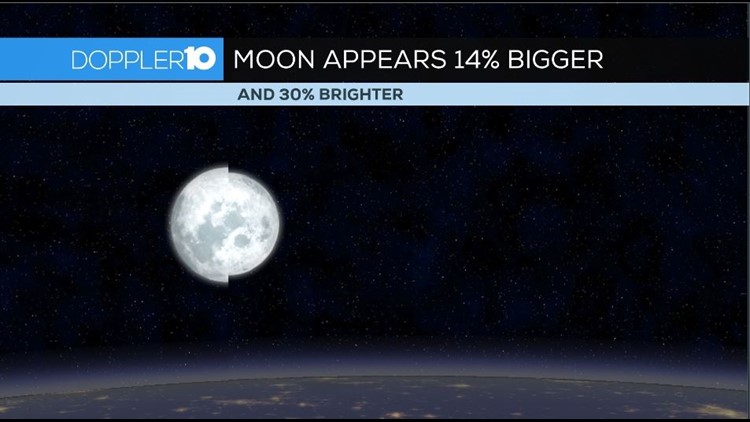This week's sky has a few highlights, but perhaps the biggest (pun intended) is the full Supermoon.
The full moon officially occurs at 8:52 a.m. on Monday morning. But, because the moon will be closest to the Earth right about the time it becomes full, it'll look about 14 percent bigger and 30 percent brighter than you may expect.
This will be the largest full moon since 1948, and we won't see one this big until 2034. In order to get the best view, you'll want to look up early on Monday morning.
The moon will look largest if you have something to put its size in perspective. This happens when the moon is near the horizon or has city buildings in the foreground.
For a full explanation of why the Supermoon happens, see last week's weather blog video highlighting the phenomenon.
Traditionally, this full moon has been called the "Full Beaver Moon" because this was the time of year that hunters set their beaver traps, before the swamps froze over for the winter.
It's also known as the "Full Frost Moon."


The Leonid meteor shower will also peak this week on Wednesday night into Thursday morning. This meteor shower is caused by debris from the Tempel-Tuttle comet.
Look up into the sky for the constellation Leo, also known as the Lion. You'll want to look near its head to find the radiant.
Ideal viewing conditions will be after midnight into the pre-dawn hours of Thursday. It'll start out in the east and slowly progress across the sky.
While not expected this year, sometimes the lion roars. Back in 1966 there were reports of up to 40 meteors per second during a particularly active shower, while in 1833 the Leonids reportedly produced 100,000 to 250,000 meteors per hour!
Again, that's not expected this year and the waning gibbous moon will make it tough to see some of the dimmer meteors.
Still, those that can cut through the light pollution could provide about 10-15 visible meteors per hour.


November is also a great month for a star cluster that has been followed for centuries by many civilizations. "The Pleiades" or M45 will be visible from nightfall until dawn.
It's found near the V-shaped pattern in the sky -- that's the "face of the bull" in the constellation of Taurus.
"The Pleiades" can also be found by drawing a line from Orion's belt to the dipper-shaped cluster.
The stars reach their highest point in the sky every year on or around Nov. 20 at about midnight.
These are also known as the "Seven Sisters," daughters of Atlas and Pleione in Greek mythology.
As I mentioned, this cluster has a place in many different cultures.
In Japan it's called Subaru, and if you look at the logo of the popular car manufacturer you'll see the six stars that make up what we call "The Pleiades."
Happy hunting!



